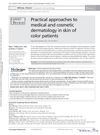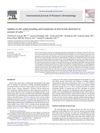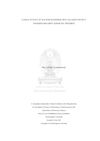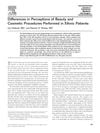Hair Transplantation in East Asians
January 2016
in “
Georg Thieme Verlag eBooks
”
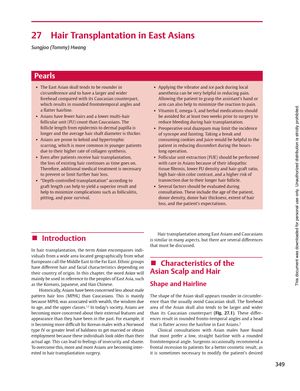
TLDR Hair transplantation in East Asians needs special techniques to ensure natural results and prevent complications due to their unique hair and scalp characteristics.
The document from 2016 outlines the unique considerations for hair transplantation in East Asians, such as their rounder skull shape, larger foreheads, fewer hairs, lower multi-hair follicular unit count, thicker hair shafts, and longer follicles, which increase the risk of transection during surgery. East Asians are also more prone to keloid and hypertrophic scarring, necessitating careful screening for scarring issues. The document recommends meticulous surgical techniques, including depth-controlled transplantation to minimize complications, and managing patient expectations. It also discusses the importance of preoperative measures, hairline design, donor harvesting, graft dissection, and preservation, with a focus on minimizing scarring and ensuring natural-looking results. The document compares strip harvesting and follicular unit extraction (FUE), noting the risk of polka-dot-like scars and higher transection risk with FUE. It emphasizes the need for individualized approaches, including dyeing gray hair before surgery, controlling graft temperature and desiccation, and creating a density gradient for a natural look. Postoperative care is also covered, along with strategies for preventing and managing complications such as necrosis, pain, numbness, and scarring. The document concludes that successful hair transplantation in East Asians requires an understanding of both achieving good results and preventing complications.
